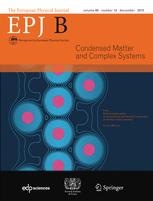Jun 9 2017
Cars that are capable of driving autonomously have recently made headlines. In the coming years, machines capable of learning autonomously will become increasingly available in everyday lives.
The secret to effective learning for these machines is to define an iterative process in order to map out the evolution of how vital aspects of these systems experience a change over time. Agustín Bilen and Pablo Kaluza from Universidad Nacional de Cuyo, Mendoza, Argentina, in a study published in EPJ B, explain that these smart systems can develop autonomously in order to carry out a particular, well-defined task over time. Applications range from Biological to Nanotechnology systems, such as genetic regulatory networks with adaptive responses, biological signal transduction networks or genetic networks in which the expression level of specific genes in a network oscillates from one state to another.
 Credit: SPRINGER
Credit: SPRINGER
An external tutor is not required for these autonomous systems, which do not even report to a central unit designed to alter what the system must learn based on their performance. To enhance their autonomy, the Authors have built in a feedback loop and delayed dynamics along with the system's performance. The delayed dynamics supply details on the history of the system, thus presenting the past relationships between its performance and structure. The feedback loop, in turn, provides information on the system's real performance in terms of how close it is to the required task.
First, the Researchers successfully applied their approach to a neural network, which helps in classifying several patterns, and this yielded 66% robustness. It is possible to apply these insights, for example, in analogue electronics, where a piece of hardware can autonomously learn a task without an external control or a central processing unit. The Researchers also tested their solution on a system of phase oscillators, which seem to be interesting since the populations of such oscillators show a few outstanding synchronisation traits. In these cases, autonomous learning plays a vital role in helping to avoid the inherent fluctuations of error usually detected in such systems.